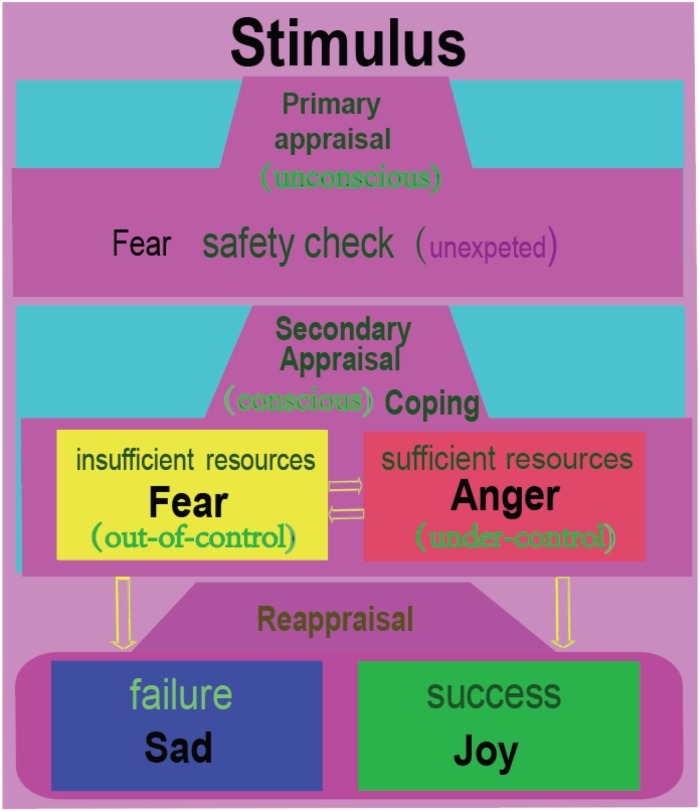FIGURE 4.
Fear and anger are twin emotions. At a surprise or uncertain situation, we humans usually have a safety check with the situation, which is unconscious, similar to Lazarus’s primary appraisal. Then the individual will consciously compare the situation with his own ability to see if he can cope with the situation. If the individual feels he has insufficient resources, he would flight away; or he will be angry and fight. Fear and anger occur in a tandem, with fear occurring first, then anger coming immediately afterward. Afterward, the individual will reflect upon the situation, which might be called reappraisal. If he coped successfully with the situation, he will be happy; or he will be sad. Therefore, we humans have four basic emotions. Just like Izard proposed: people need the emotion fear to explain flight for safety; anger to explain tendency to cope with the unexpected situation; joy or happiness to express the pride of achievement, and sadness to express the acceptance of failure (Izard, 2007).

